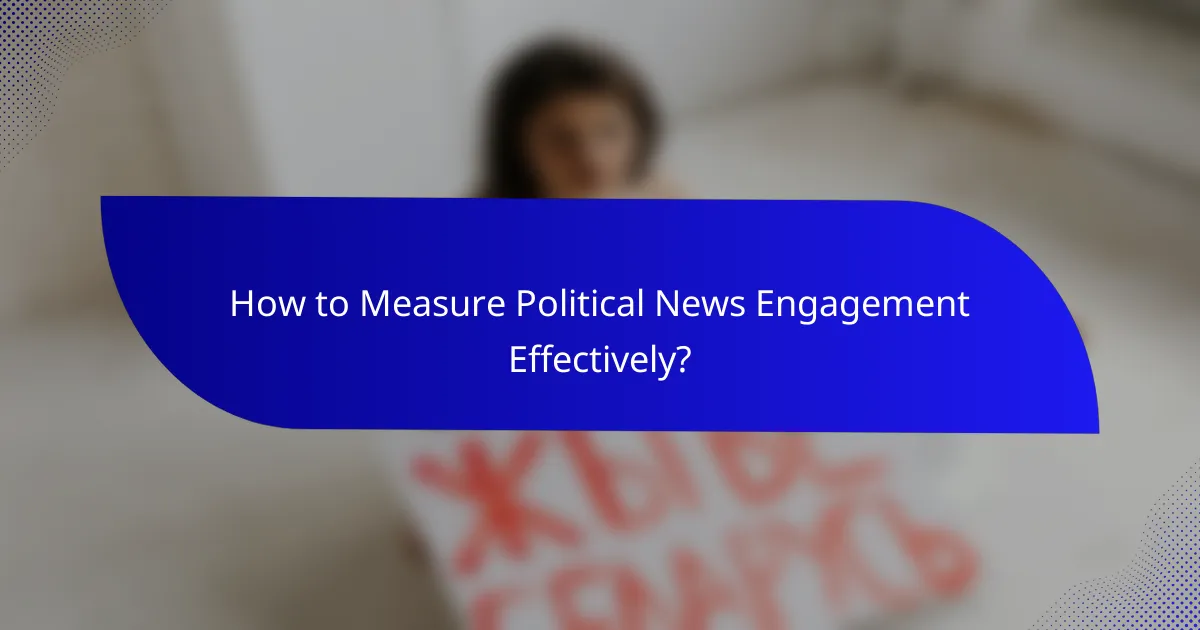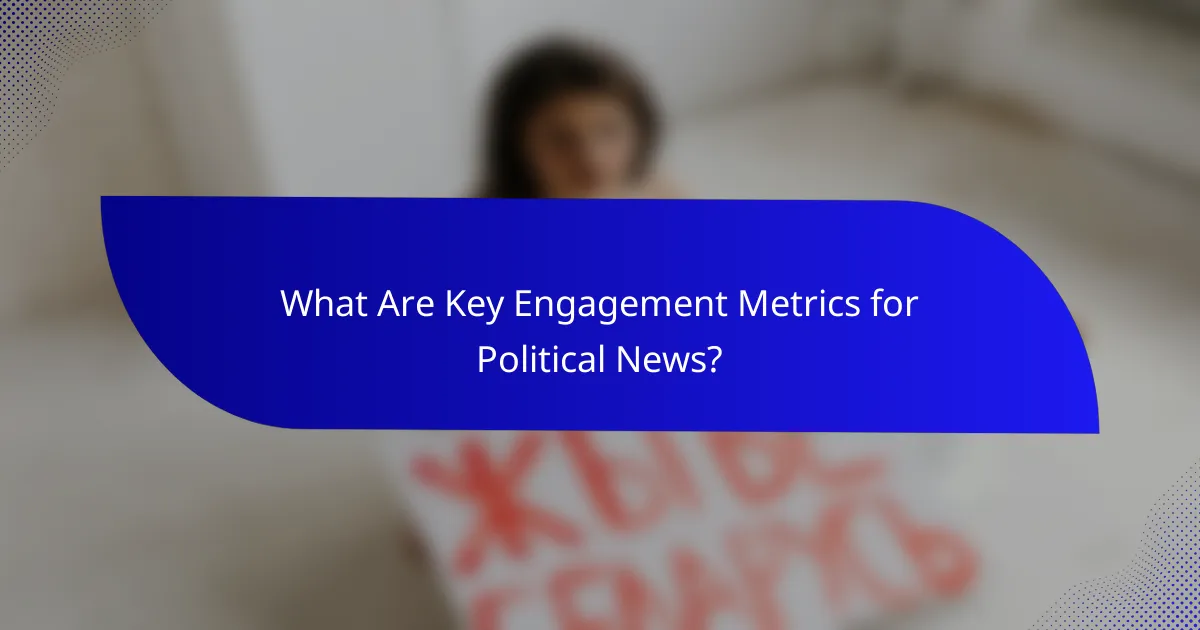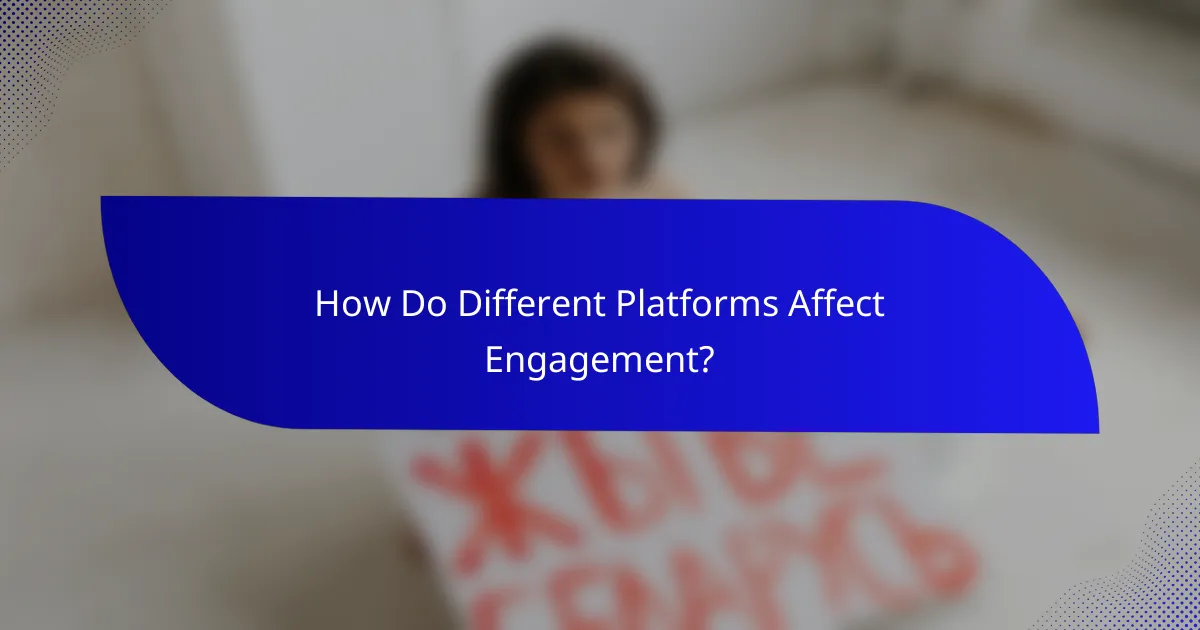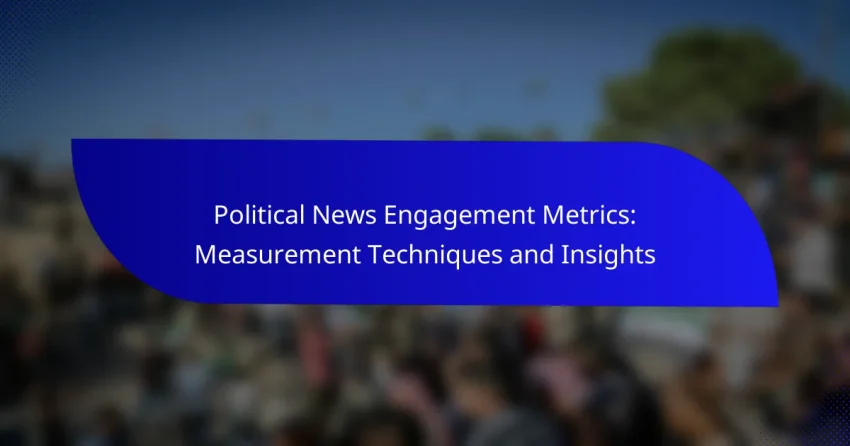Measuring political news engagement is crucial for understanding audience interaction with content. By utilizing techniques such as social media analytics, website traffic analysis, and audience surveys, media organizations can gain valuable insights into how effectively their content resonates with viewers. Key metrics like Click-Through Rate and Time Spent on Page provide a clearer picture of engagement levels, allowing for the refinement of strategies to enhance reach and impact.

How to Measure Political News Engagement Effectively?
Measuring political news engagement involves analyzing various metrics to understand how audiences interact with content. Effective measurement techniques include social media analytics, website traffic analysis, audience surveys, email engagement metrics, and video viewership tracking.
Using Social Media Analytics
Social media analytics provide insights into how political news is shared and discussed across platforms. Key metrics include likes, shares, comments, and overall reach, which can indicate audience sentiment and engagement levels.
Tools like Facebook Insights and Twitter Analytics can help track these metrics. Regularly monitoring engagement trends can inform content strategies and highlight which topics resonate most with your audience.
Implementing Website Traffic Analysis
Website traffic analysis measures how users interact with political news articles on your site. Key metrics include page views, unique visitors, and average time spent on articles, which indicate how engaging the content is.
Utilize tools like Google Analytics to assess traffic sources and user behavior. Understanding which articles attract the most traffic can guide future content creation and marketing efforts.
Utilizing Audience Surveys
Audience surveys are a direct way to gather feedback on political news engagement. Surveys can assess reader preferences, satisfaction levels, and perceived relevance of the content.
Consider using online survey tools to distribute questionnaires. Aim for concise surveys with targeted questions to maximize response rates and gather actionable insights.
Leveraging Email Engagement Metrics
Email engagement metrics help measure how well political news reaches subscribers. Key indicators include open rates, click-through rates, and unsubscribe rates, which reflect audience interest and content effectiveness.
Use email marketing platforms to track these metrics. Regularly analyzing email performance can help refine messaging and improve engagement with your audience.
Tracking Video Viewership
Tracking video viewership is essential for understanding engagement with political news content in video format. Metrics such as views, watch time, and audience retention rates provide insights into viewer interest and content effectiveness.
Platforms like YouTube offer analytics tools to monitor these metrics. Consider creating shorter, impactful videos to enhance viewer retention and engagement.

What Are Key Engagement Metrics for Political News?
Key engagement metrics for political news include Click-Through Rate (CTR), Time Spent on Page, Social Shares and Likes, and Comments and Interactions. These metrics help gauge how effectively content resonates with audiences and can inform strategies for improving reach and impact.
Click-Through Rate (CTR)
Click-Through Rate (CTR) measures the percentage of users who click on a link to your political news article compared to the total number of users who viewed the link. A higher CTR indicates that the headline and description are compelling enough to prompt clicks. Aim for a CTR of around 2-5% for effective engagement.
To improve CTR, consider A/B testing different headlines and images. Use clear, action-oriented language that conveys the article’s value. Avoid clickbait, as it can lead to high bounce rates and damage credibility.
Time Spent on Page
Time Spent on Page refers to the average duration that readers engage with your political news content. This metric is crucial as it reflects the depth of reader interest and comprehension. Generally, a time span of 2-5 minutes is considered good for articles, while longer pieces may warrant even more time.
To increase time spent on page, provide in-depth analysis, engaging visuals, and interactive elements. Break up text with subheadings and bullet points to enhance readability. Monitor this metric regularly to identify content that captivates or loses reader interest.
Social Shares and Likes
Social Shares and Likes indicate how often your political news articles are shared or liked on social media platforms. These metrics are vital for understanding the reach and virality of your content. Aiming for shares in the low hundreds to thousands can signify strong engagement, depending on your audience size.
To boost social shares, create shareable content that resonates emotionally or provides unique insights. Include social sharing buttons prominently and encourage readers to share by asking questions or prompting discussions at the end of articles.
Comments and Interactions
Comments and Interactions measure the level of engagement through reader feedback and discussions on your political news articles. High interaction rates suggest that your content is sparking conversation, which can enhance community building. Aim for a few comments per article, with higher numbers indicating strong engagement.
Encourage comments by posing open-ended questions and responding to readers promptly. Create a welcoming environment for discussion by moderating comments to maintain a respectful dialogue. This not only increases interaction but also fosters a loyal readership.

How Do Different Platforms Affect Engagement?
Different platforms significantly influence engagement metrics due to their unique user interfaces, audience demographics, and content formats. Understanding these differences helps in tailoring strategies to maximize interaction and reach.
Facebook Engagement Trends
Facebook engagement trends show that posts with images or videos typically receive higher interaction rates compared to text-only updates. Content that sparks conversation, such as polls or questions, can also boost engagement significantly.
To enhance engagement, consider posting during peak hours when your audience is most active, usually in the early evening. Regularly analyzing your page insights can help identify which types of content resonate best with your followers.
Twitter Interaction Rates
Twitter interaction rates are often measured by likes, retweets, and replies. Tweets that include images or videos tend to perform better, as visual content grabs attention quickly in a fast-paced feed.
Engagement can be increased by using relevant hashtags and participating in trending topics. However, avoid excessive tweeting, as this can lead to audience fatigue and lower interaction rates.
Instagram Visual Engagement
Instagram visual engagement relies heavily on high-quality images and videos, with stories and reels driving significant interaction. Posts that tell a story or evoke emotions typically see higher engagement levels.
Utilizing features like polls and questions in stories can foster direct interaction. Consistency in posting and maintaining a cohesive aesthetic can also enhance overall engagement on the platform.
YouTube Viewer Retention
YouTube viewer retention is crucial for engagement, as it measures how long viewers stay on a video. Higher retention rates can improve a video’s ranking in search results and recommendations.
To boost viewer retention, create compelling intros and maintain a steady pace throughout the video. Engaging thumbnails and clear calls to action can also encourage viewers to watch until the end. Regularly reviewing analytics helps identify drop-off points and optimize future content accordingly.

What Tools Are Best for Analyzing Engagement?
To effectively analyze engagement in political news, several tools stand out for their specific capabilities in measuring audience interaction and content performance. Choosing the right tool depends on your focus area, whether it be website traffic, social media metrics, or content effectiveness.
Google Analytics for Traffic Insights
Google Analytics is a powerful tool for tracking website traffic and user behavior. It provides insights into how visitors interact with your political news site, including page views, session duration, and bounce rates. Understanding these metrics helps identify which articles resonate most with your audience.
To get started, set up goals to measure specific actions, such as newsletter sign-ups or article shares. Regularly review the Audience and Behavior reports to gauge engagement trends and adjust your content strategy accordingly.
Hootsuite for Social Media Metrics
Hootsuite offers comprehensive social media analytics that track engagement across various platforms like Twitter, Facebook, and Instagram. It allows you to monitor likes, shares, comments, and overall reach, providing a clear picture of how your political content performs on social media.
Utilize Hootsuite’s reporting features to analyze which posts generate the most engagement and at what times. This data can inform your posting schedule and content strategy, ensuring you maximize audience interaction.
BuzzSumo for Content Performance
BuzzSumo specializes in content analysis, helping you discover what political topics are trending and which articles are performing well. It allows you to see shares, backlinks, and engagement metrics across various platforms, giving you a holistic view of content effectiveness.
Use BuzzSumo to identify key influencers in political news who can amplify your content. Regularly check for high-performing articles in your niche to inspire your own content creation and ensure relevance to current discussions.
